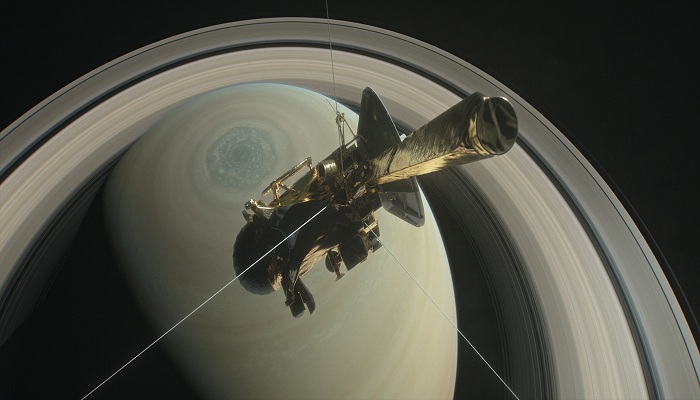
NASA’s Cassini spacecraft is closing in on the end of its epic 20-year-long journey in space, as it prepares to take the final plunge into the atmosphere of Saturn.
A gravitational kick in April from Saturn’s moon Titan placed the two-and-a-half tonne space probe on its path for impending destruction on September 15.
However, several mission milestones have to occur over the coming two weeks to prepare the vehicle for one last burst of trailblazing science.
“The Cassini mission has been packed full of scientific firsts, and our unique planetary revelations will continue to the very end of the mission as Cassini becomes Saturn’s first planetary probe, sampling Saturn’s atmosphere up until the last second,” said Linda Spilker, Cassini project scientist from NASA’s Jet Propulsion Laboratory in the US.
“We’ll be sending data in near real time as we rush headlong into the atmosphere – it’s truly a first-of-its-kind event at Saturn,” said Spilker.
The spacecraft is expected to lose radio contact with Earth within about one to two minutes after beginning its descent into Saturn’s upper atmosphere.
However, on the way down, before contact is lost, eight of Cassini’s 12 science instruments will be operating.
In particular, the spacecraft’s ion and neutral mass spectrometer (INMS), which will be directly sampling the atmosphere’s composition, potentially returning insights into the giant planet’s formation and evolution.
On the day before the plunge, other Cassini instruments will make detailed, high-resolution observations of Saturn’s auroras, temperature, and the vortices at the planet’s poles.
Cassini’s imaging camera will be off during this final descent, having taken a last look at the Saturn system on September 14.
On September 9, Cassini will make the last of 22 passes between Saturn itself and its rings – closest approach will be 1,680 kilometers above the clouds tops.
The spacecraft will make a distant flyby of Saturn’s largest moon, Titan on September 11.
Even though the it will be 119,049 kilometers away, the gravitational influence of the moon will slow down the spacecraft slightly as it speeds past.
A few days later, instead of passing through the outermost fringes of Saturn’s atmosphere, Cassini will dive in too deep to survive the friction and heating.
On, September 14, Cassini’s imaging cameras will take their last look around the Saturn system, sending back pictures of moons Titan and Enceladus, the hexagon-shaped jet stream around the planet’s north pole, and features in the rings.
The probe will turns its antenna to point at Earth on September 14, to begin a communications link that will continue until end of mission, and send back its final images and other data collected along the way.
The “final plunge” begin will begin on September 15.
“The end of Cassini’s mission will be a poignant moment, but a fitting and very necessary completion of an astonishing journey,” said Earl Maize, Cassini project manager at NASA’s Jet Propulsion Laboratory.
“The Grand Finale represents the culmination of a seven- year plan to use the spacecraft’s remaining resources in the most scientifically productive way possible,” said Maize.
“By safely disposing of the spacecraft in Saturn’s atmosphere, we avoid any possibility Cassini could impact one of Saturn’s moons somewhere down the road, keeping them pristine for future exploration,” he said.

Post Your Comments